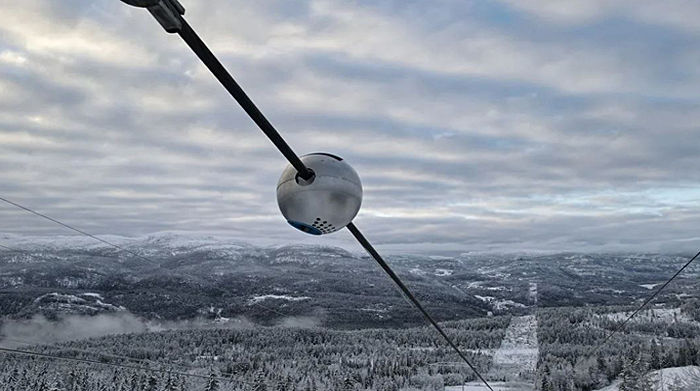Using Sensor Networks to Increase Grid Capacity

Image courtesy of ThinkGeoEnergy under Attribution 2.0 Generic License, resized to 700 x 391 pixels.
It’s no secret that old high-transmission power lines are a problem for electric utilities, but installing sensor networks could expand existing capacity by a whopping 43%! This is a relatively easy improvement, and the results from some recent efforts show excellent results.
The Nuts and Bolts of Sensor Networks
Minnesota-based Great River Energy recently piloted sensor network technology, and it was highly successful. In a nutshell, this pilot involved the installation of 4 smart sensor motes or neurons, provided by a company called Heimdall Power, on high voltage transmission lines.
Each Heimdall mote is lightweight and is roughly the size of a soccer ball. They are extremely easy to install; in fact, each Great River sensor could be installed in less than 2 minutes via drone!
Not only are the sensors easy to install, but they are also extremely cost effective. According to Heimdall, each sensor costs less than 5% of the cost to build a new line. To put this in perspective, according to the EIA, building a new transmission line can cost anywhere from $1.2 million to $8.6 million. Five percent of these amounts is $60,000 – $430,000.
The sensor networks monitor the electrical current and temperature, detect faults, and monitor for ice, among other things. All of this data is transmitted in real time to inform operators.
The result from the Great River pilot was a near 43% increase in transmission capacity! This was primarily achieved by using dynamic line ratings to adjust the power transmission in certain lines.
Those are just incredible results. Given the extreme cost and timeline / bottlenecks associated with developing new transmission lines, squeezing out an additional 43% of capacity for pennies on the dollar is tremendous value.
There is little doubt that these results are highly encouraging. Regardless of the challenges of building new high voltage transmission, the utilization of sensor networks either in lieu of, or in addition to, these projects seems like an absolute no-brainer from an emergency preparedness perspective!



